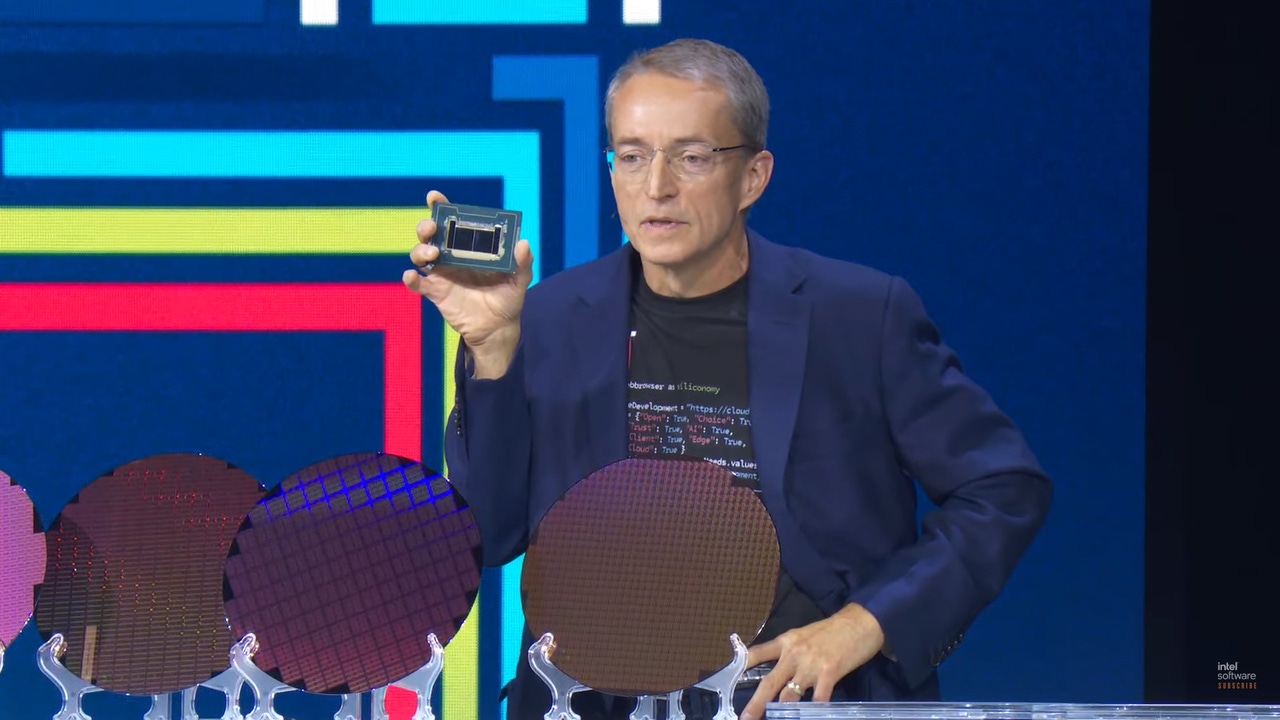Intel Announces Next-Gen 288-Core Xeon Server ProcessorIntel Announces Next-Gen 288-Core Xeon Server Processor
At its Intel Innovation event, the chipmaker also announced a collaboration with Dell on new AI servers and the launch of Intel Developer Cloud for building AI and HPC applications.

Intel today announced that its next-generation Xeon server processor, code-named Sierra Forest, will include a version that features 288 cores. That will make it the largest core count in the industry when it’s available during the first half of 2024.
Sierra Forest, part of Intel’s forthcoming fifth-generation Xeon server processors, is a fast, energy-efficient chip designed for hyperscalers and other cloud providers that need to balance performance requirements with power efficiency in their data centers.
The new chip will deliver 2.5 times better rack density and 2.4 times higher performance per watt over Sapphire Rapids, Intel’s fourth-generation Xeon processor, the company said. Intel CEO Pat Gelsinger shared the news at his keynote speech today at the Intel Innovation 2023 conference in San Jose, Calif. The company previously said Sierra Forest would feature 144 cores.
“Earlier in the year, we showed 144 cores per piece of silicon. What we didn’t tell you was that we had two die per package, so we have a whopping 288 cores on one Sierra Forest product line with 12 channels of memory and further improvements for cloud-optimized environments – huge gains for cloud-scale customers,” Gelsinger said in his keynote.
Analyst Matt Kimball of Moor Insights & Strategy said the news that Sierra Forest has 288 cores is significant. It will surpass AMD and Ampere on core count in the market for high-density, power-efficient chips aimed at cloud providers. In May, Ampere launched its Arm-based AmpereOne processor, which features 192 cores, while AMD released the 128-core Bergamo chip this summer.
“Having 288 cores just blows everything out of the water,” Kimball said to Data Center Knowledge in an interview.
While it’s hard to quantify what the core count means in terms of actual performance, Intel gives a hint when it says Sierra Forest will deliver 2.4 times the performance per watt and 2.5 times the rack density over Sapphire Rapids, he said.
“They’re talking about significant performance gains,” Kimball said in reference to Intel. “It’s safe to say this will be competitive to AMD’s Bergamo and Ampere’s AmpereOne.”
The biggest cloud providers want to squeeze as many workloads per rack into their data centers while being as energy efficient as possible – and Sierra Forest will enable that for cloud workloads, Kimball said.
“This will allow hyperscalers to squeeze seemingly exponentially more workloads per rack in their data centers,” he said. “It will also translate into significant power savings and cost savings as well. The TCO (total cost of ownership) story for Sierra Forest is going to be a strong one to tell.”
Intel Xeon Roadmap
Intel previously detailed its fifth-generation Xeon processor roadmap. Sierra Forest will be built using Intel’s E-core architecture that is designed for power efficiency, while another processor, code-named Granite Rapids, will be built using Intel’s P-core architecture, which focuses on best performance.
Gelsinger reiterated that the Xeon roadmap was on track during his keynote. Intel plans to release its Emerald Rapids Xeon chip on Dec. 14. It will release Sierra Forest in the first half of 2024, and Granite Rapids shortly after. Granite Rapids will offer two to three times better performance for AI workloads over Sapphire Rapids. Clearwater Forest, a next-generation E-core Xeon processor, is expected in 2025.

intel-xeon-roadmap
New Dell Server Products, Intel Developer Cloud Launches
Intel made other data center-related announcements at Intel Innovation today.
The company announced it is collaborating with Dell Technologies to build new PowerEdge hardware on Intel Xeon and Gaudi AI processors to support AI workloads.
Intel also announced the availability of Intel Developer Cloud, where Intel developers can access the tools they need to build, deploy and train their AI models.
Intel also announced that a large AI supercomputer is being built in Europe that will run on Xeon and Gaudi processors. A company called Stability AI will be the anchor customer. Gelsinger said when the supercomputer is built, it will become one of the top 15 AI supercomputers in the world, but he did not provide any additional details.
About the Author
You May Also Like









